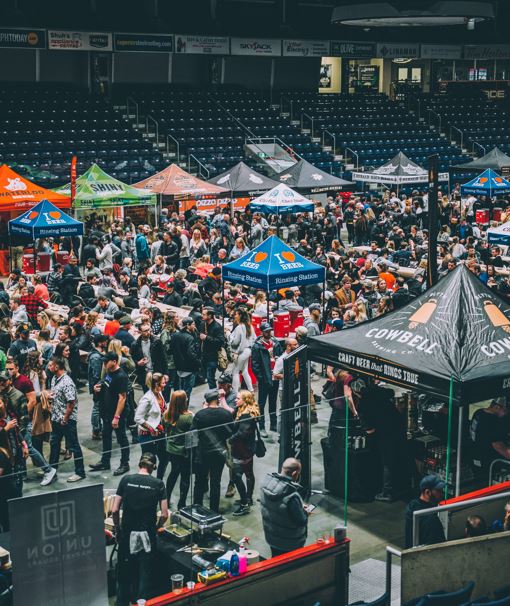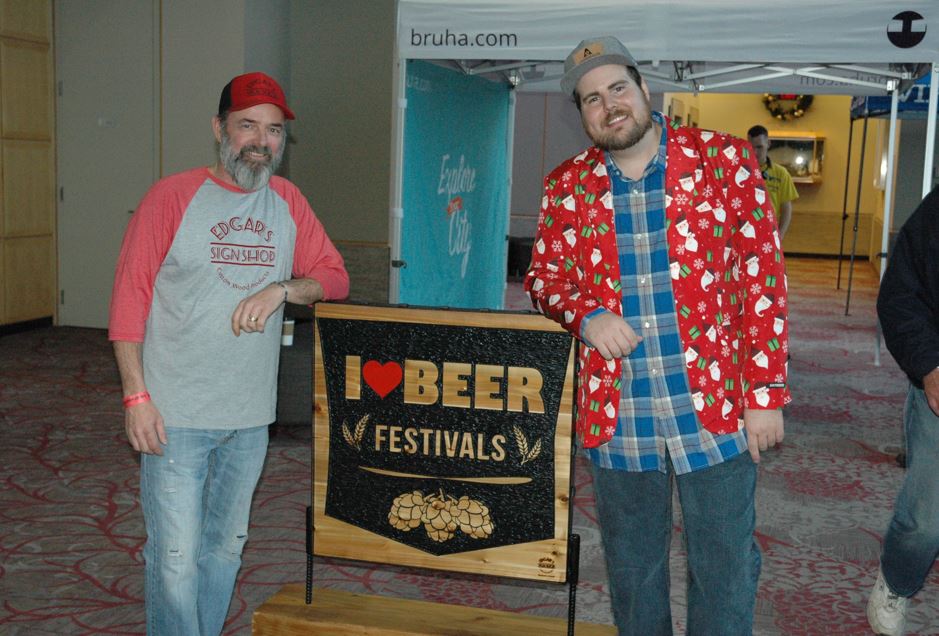Founded in 2017 by Faron Benoit, the I Heart Beer festival has expanded steadily to eight cities across Ontario, providing countless attendees with an array of food vendors, beer offerings, and interactive activities and entertainment.
Benoit, who started his business in Brantford and also makes his home in the city, explained his professional background and the early beginnings of the festival.
“I went to McMaster University for Economics and followed that up with a degree in Online Business from Mohawk College. This was about 20 years ago, when vlogging was popular and the internet was becoming huge. Initially, I aimed for a career in finance, but I also eventually wanted to start my own business—which is why I went to Mohawk,” he said. “Unfortunately, I graduated right into the financial crisis, which put a damper on my finance goals. Afterward, I had to work in a factory in Mississauga for a while. I’m originally from Oakville (though I was born in Newfoundland), but I ended up moving to Brantford. My wife is a teacher, and she was working in Simcoe. Brantford was roughly the halfway point between her job and mine… so that’s how we ended up settling here.”
“With two young children, I felt I couldn’t leave my secure job right away, so I needed a transitional opportunity. I experimented with a few small ventures—a bath bomb business and a student employment business—but neither really took off…then one day, I heard about a winter beer festival in Toronto,” continued Benoit. “I love planning and instantly thought, ‘I could do that.’ So I decided to try it in Hamilton first and that was my first beer festival in 2017. I knew nothing about the business, but I called around, asked a lot of questions, and figured it out on the fly. My background in economics and business quickly kicked in. After assessing the financial results of the Hamilton festival, I realized I could eventually make this a full-time career if I focused on expansion.”
The entrepreneur would quickly gain valuable lessons early on by going in with both feet first.
“The biggest lesson I learned early on was that you simply don’t know what you’re getting into until you run the event. There are two ways to approach the event business: you can either plan incessantly until you think you know every detail, or you can dive in and learn from your mistakes. Since I was so green, I knew mistakes were inevitable even with perfect planning. I opted for the latter approach,” explained Benoit. “My strategy, aligned with my economics and business background, was to execute the event, analyze the results, and then determine viability. I ran the first event, and it went well. We hosted 1,800 people over the two days, though I had initially hoped for 3,000 (my marketing clearly wasn’t great yet). The real challenge was financial. Due to high initial capital costs and a lack of economies of scale—everything, from the glassware to the rentals and ice, was more expensive when bought in low volume—I lost about $10,000 on that first venture.”
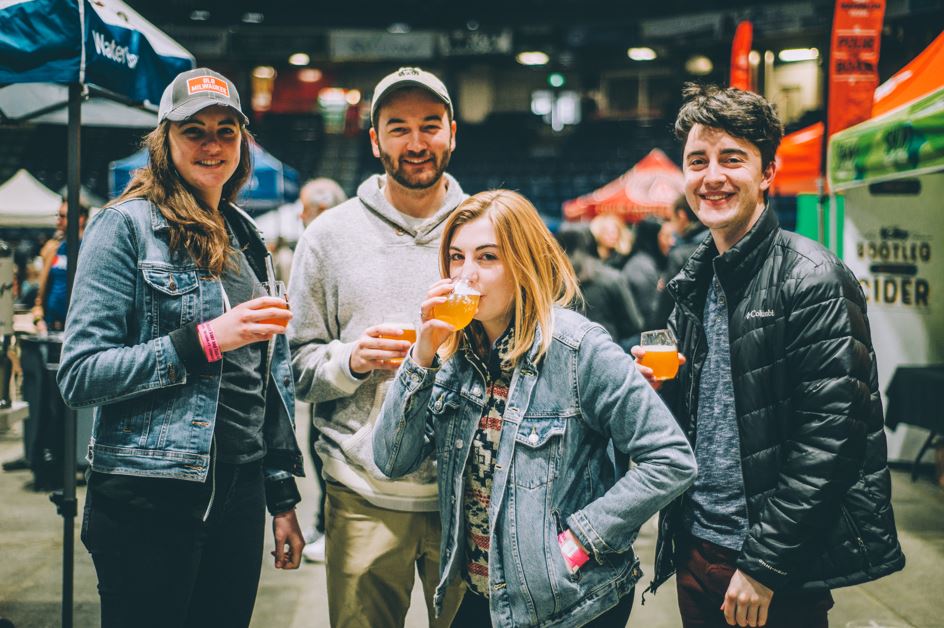
However, he would utilize his economics background when it came to reviewing the numbers and seeing that was feasible.
“I started crunching the numbers to see how I could recover the loss. I mapped out cost-saving scenarios and asked myself, ‘what if I consolidated the setup and teardown into one day to save on labour and venue costs?’ and ‘what financial impact would be in securing sponsors?’ I found that even with the same 1,800 attendees, I could make a small profit—or at least breakeven—by making these strategic changes,” said Benoit. “Based on this analysis, I decided to launch a second event in Guelph. This time, I personally handled all the planning and marketing, implementing the cost-saving strategies I had calculated. It was highly successful, and I not only made back the initial loss but solidified my belief in the business. I soon realized that this was something I would slowly grow until I could make enough money to finally transition out of my factory job in Mississauga.”
As the I Heart Beer Festival expanded to various cities in Ontario including Toronto, and Ottawa, one of the biggest challenges continued to be attracting sponsorships.
“Securing sponsorships proved more difficult than I initially thought. It’s an alcohol-centric event, and many major brands are understandably hesitant to be visibly involved with that. Looking at other events, I quickly realized that unless a beer festival is truly massive, it typically doesn’t attract many corporate sponsors. I accepted that sponsorship would be a slow grind, and I shifted my focus to building long-term value. Our strategy to court potential partners was simple [as] we needed to have a proof of concept, operate [successfully] in multiple cities, and develop a solid reputation for being safe, effective, and providing excellent value for their dollar,” reflected Benoit. “Slowly, we were able to secure smaller partners, mainly drink sponsors. But, we’ve managed to branch out—for instance, we once had a taxi company sponsor in the Kitchener area—and we are constantly looking for big players, like the Ontario Lottery Corporation (OLG). The biggest takeaway, however, is the necessity of scale. Major organizations aren’t interested in an event with 2,000 people; they want visibility across 10,000, 20,000, or 40,000 attendees. Decent sponsors only come once you achieve that critical mass, and achieving that scale is our current strategic focus.”
Nevertheless, Benoit would end up securing Cowbell Brewery after developing ways of prompting sponsorship.
“By 2019, I realized sponsorship was the only revenue stream I hadn’t effectively tackled. Instead of creating generic, rigid sponsorship packages, we shifted our approach. We added a prompt to our vendor application that simply stated, ‘If you’re interested in sponsorship or doing more than being a simple vendor, reach out and we can talk about it,’” he said. “This proved to be the best possible approach. It allowed us to move away from a one-size-fits-all model and instead customize agreements based on a vendor’s specific goals for presence and engagement. We waited for interested parties to reach out, or we initiated contact to see if they’d be interested in a larger role, making the partnership process much more effective.”
“A major success story for this approach was our partnership with Cowbell Brewery. Their new marketing team recognized the gap in winter events and saw our festival as the perfect platform,” continued Benoit. “This highlights our key strategic advantage, [where] we focused solely on winter events, deliberately avoiding the high-competition summer season. While we aren’t the only winter game in town, we are one of the very few high-quality options available to breweries. This makes it significantly easier to attract vendors, as our event offers them a valuable opportunity to engage with customers when their other event-based options are scarce.”
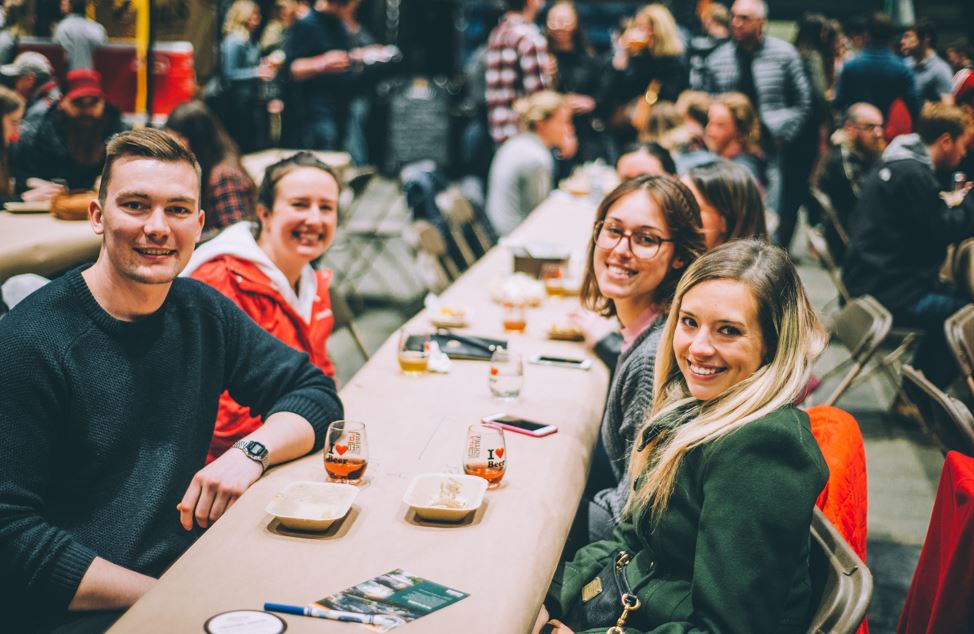
In doing these festivals, Benoit would learn many new things about microbreweries and its strong connections with their local communities.
“When I started in 2017, the craft brewery scene was certainly present, but it truly began to explode in the years immediately following. It felt like the industry was growing exponentially every year. I remember being surprised when a couple of breweries opened up in Hamilton—and chose a different strategy. Back then, many craft operations relied on a combination of a small brewpub and local distribution. I had always assumed the real money was in mass distribution through the LCBO and the Beer Store,” he stated. “These new places were instead opening up taprooms and relying heavily on their immediate, local market. At first, I didn’t understand it; I thought focusing solely on a brewpub was crazy, and I didn’t see the value…within a year or two, as more and more of these spots popped up, I started to realize how engaging they were with their communities. That’s what I truly love about the local beer scene now. It proves you don’t have to be a massive corporation delivering across Ontario or Canada. You can successfully create your own small niche within a neighborhood and generate enough local demand to support your entire business.”
Nevertheless, Benoit started researching information and found out which areas worked the best when it came to the events.
“After a few years, I was able to formalize my operation by creating a spreadsheet model that defined the necessary inputs for a successful event—specifically, the minimum required attendance and city demographics. I initially estimated needing a city with a population of 100,000 or more to achieve at least 1,000 attendees. Due to rising costs post-COVID, that minimum attendance requirement has since increased to 1,500 to 1,600 people just to break even or turn a profit,” he explained. “The challenge is realizing that demanding 1 per cent of a city’s population to attend your specific event is a significant ask, even if it doesn’t seem like much on paper. My initial expansion strategy was defined by geography…I limited my scope to within an hour and a half of Brantford. This included the Tri-City area (Guelph, Kitchener-Waterloo, and Cambridge), Hamilton, and Toronto, with London also being an early market. This period involved careful testing, with some cities proving to be great successes while others fell off. Once those core markets were established, I began expanding my radius, trying Markham and later moving to Barrie and Peterborough.”
The furthest festival to date has been the one held in Ottawa.
“A major turning point was the opportunity to launch an event in Ottawa. This was a logistical stretch, requiring accommodations and increased complexity. However, I decided to try it, and it was a great success. Ottawa proved to be a robust market, and we’ve maintained our presence there. We learned that success is highly variable in smaller markets,” said Benoit. “The demographics are different, and the smaller population size requires a more intense, hyper-focused marketing approach tailored specifically to that community. Furthermore, running events far from home involves increased logistical challenges and higher costs, meaning cost efficiency is absolutely critical to maintain profitability and deliver value to attendees.”
But one of the most successful cities for the festival has been Kitchener.
“We do it at Bingamans, and they have a big news conference centre that has two main rooms and then two smaller rooms. And we’re able to do two seating areas with our food and drink vendors in each big room, and then in one small room, we do a game board area. We have seating for about 50 to 60 people, and we have board games, and it’s a more quiet area…[being] in between the two big halls, and they each have their own DJ and then this is just like a nice little quiet hall,” Benoit noted. “And it’s always packed…people are just having fun playing things like old school Battleship and Connect Four. And then on the far end we have another area, and we turned that into a games area…where we put our arcade, our beer pong. Another thing we did was last year we tried doing a silent disco in Toronto. I wasn’t sure how it was going to go, but it was extremely popular. And I think that’s the next thing we’re going to add slowly to each event.”
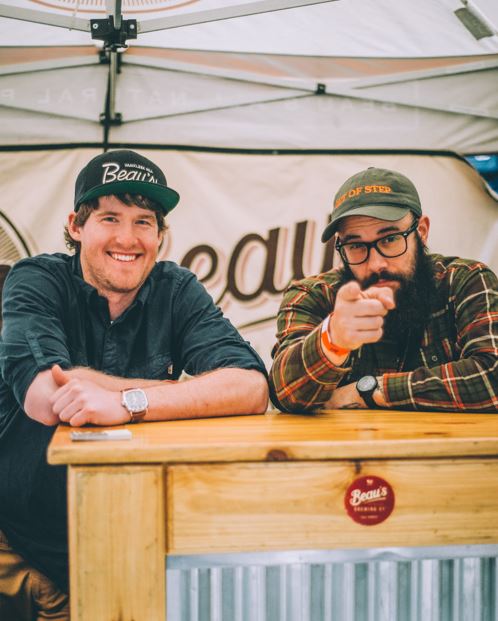
However, Benoit believes it’s about keeping the events affordable and improving facets especially from feedback from vendors.
“We strive for a consistent, high-quality event every time, which means maintaining the same event structure and ticket price regardless of the city. Early on, I realized most festivals lacked one critical thing which was seating. That’s why our signature feature is a large, beer hall-style seating area—if logistics permit—usually placed in the centre of the event with the vendors surrounding it,” he said. “Beyond comfort, we pack in the fun with arcades, beer pong, and a live DJ. As the evening progresses, the music gets louder, the vibe gets ‘dancey,’ and the atmosphere naturally transitions into a full-fledged dance party. Food is another big focus. While we centered on tacos the last two seasons, we’re now shifting to feature local establishments in a sampling event format for the next season, ensuring attendees can try a wide variety of foods.”
“A lot of my best improvements come directly from feedback, not only from ticket holders but also from the vendors themselves,” continued Benoit. “The most powerful positive feedback we receive is twofold. First, in smaller communities, people genuinely appreciate having a high-quality winter event, as most social activities are confined to the summer months. Second, our commitment to a great food selection, seating, and games sets us apart. The best comments often come from people who attend other beer events; they know what the competition is missing, and that’s when our unique features really shine.”
Benoit also reflected on the short and long-term strategies for the business.
“Due to the current economic environment, our short-term plan is to prioritize efficiency by scaling back our operation. We found that Friday nights didn’t consistently meet sales expectations last year. To ensure we provide maximum value for our vendors—many of whom travel four or five hours and incur significant logistics and accommodation costs—we are temporarily eliminating Friday sessions. By focusing solely on a full Saturday event, we ensure maximum density and traffic for our vendors while simultaneously reducing their costs, as well as our own operating expenses,” he explained. “For the immediate future, this one-day format allows us to be significantly more efficient and profitable. The most significant constraint on our growth has been space. The bare minimum requirement for a viable event is an indoor venue large enough to host at least 1,000 people per session, and many mid-sized cities simply do not have suitable rental facilities that meet this need. So, our long-term strategy is centered on rapid growth in Toronto and Ottawa, the two largest markets in Ontario. These cities offer access to venues—convention centres and large halls—that can accommodate thousands of people. These are currently the only markets we know of in Ontario with both the necessary population to support high attendance and the infrastructure to handle it.”
As the I Heart Beer festival closes in on its ten-year anniversary, Benoit highlighted what makes these types of events special.
“I truly appreciate how the craft beer world has expanded and diversified. This diversity is what defines our festival. Since we are a sampling event, attendees can come and try all sorts of unique brews—from cucumber beers to experimental stouts. You might spend only a few dollars on a sample of something entirely new; if you don’t like it, you haven’t wasted money on a full can or six-pack. Our festival offers an unparalleled opportunity to explore products you would never typically find at the LCBO or a standard beer store,” he said. “We [also] consistently receive positive feedback. Attendees love the chance to interact directly with brewery staff, and sometimes the actual brewers, to discuss the process and the ingredients. I especially appreciate the risk-taking by smaller brewers. With intense competition [and] while they maintain their basic offerings (lagers, IPAs), they truly shine when they create these unique “one-off” or specialty beers to differentiate themselves. It’s this constant push for innovation in ingredients and flavors that makes the industry so exciting, and we’re proud to provide the platform for that discovery.”
